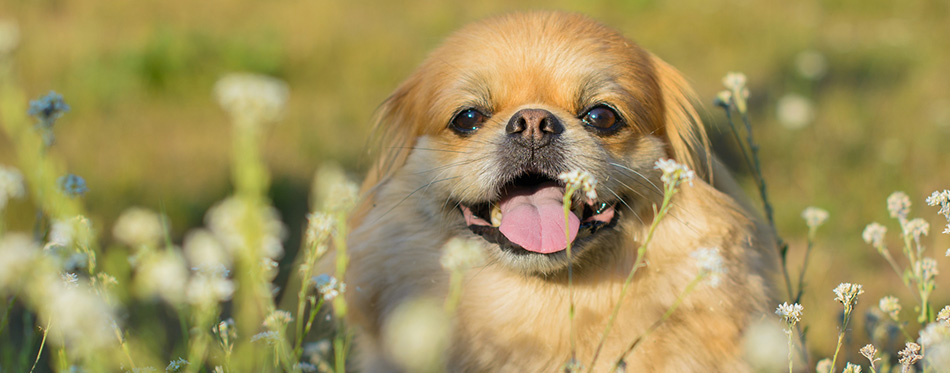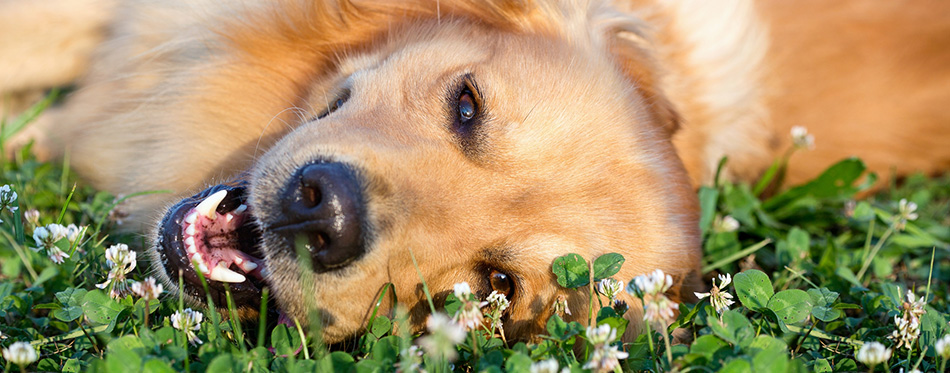If you have been a pet adopter for long, you cannot help but wonder if dogs can actually laugh when they are in a very good mood. It would appear that they do, especially when you spoil them with their favorite toy or treat, but do dogs really have the capacity to laugh? No doubt, many scientists have been researching this for decades, and there is still no conclusion. In fact, there is so much that scientists are yet to discover about laughter in the human population, so it is quite understandable that not much is known about the canines or the manner in which they communicate as well as express joy. Yet, the question of ‘‘do dogs laugh?’’ still stands. Continue reading to find out.

What Science Says About Dogs Laughing?
Animal behaviorists have had their heads locked together in a debate about dogs laughing. Most of them have already come to the conclusion that dogs cannot laugh; at least they can’t laugh in the same way as humans. However, canines have been observed to make sounds comparable to a laugh, which mostly emanates when they are at play — the sound results from some breathy panting that are forcefully exhaled. However, experts prefer not to call it a dog laugh, but a play-pant, since canines use it in inviting both their human family and other pups to play.
Play-panting is not restricted to canines as it has been observed from many other species of animals, including primates. A pup naturally combines its play-pant with body language, inviting others to play, like in play bows, teasing jumps towards people with a demeanor best described as relaxed, or a paw extended to you.
According to Patricia Simonet – an animal behaviorist at Sierra Nevada College, dogs making play-pant sounds come with a wider range of frequency relative to the usual dog panting – she discovered this through her recordings of canine panting sounds. Her conclusion is that the sound can be considered as a type of canine laugh.
When Simonet played the play-panting recordings to puppies, her observation was that their level of activity increased upon hearing the sound. The same recordings also appeared to have calming effects on pups in the animal shelter. For more options, check out our detailed reviews of calming supplements for dogs and dog ball launchers.
How Does Canine Laughter Sound?
Laughter is a sound realized by inhaling and exhaling air. With humans, laughter is produced when air is squeezed out of the ribcage by the chest muscles, and in the process, create a vocalized “haha” sound. On the other hand, canine laughter is produced by panting without any form of vocalization, and in the process, a “hhuh hhah” sound is created.
Several dog parents have tried mimicking canine laughter in a bid to create a bond with their furbabies. To achieve the “hhuh” sound, you need to assume slightly rounded lips, the “hhah” sound calls for a slight smile with the mouth open, and then, you continue alternating the two. The sound needs to be breathy without any actual vocalization of the noises – see it like panting. According to some dog adopters, their pet dogs would normally respond by their tail movement, sitting up or moving in to investigate where the sound is coming from.
Can Canines Smile?
Social media has a plethora of images with dogs that are appearing to put on a grin. But it would appear that similar to laughing, the pups are not capable of smiling in the same way as the human population.
However, it is possible for your pooch to make his face appear to smile. It can achieve this facsimile of a smile by simply opening its mouth with the lips pulled back, and then, allowing its tongue to lap out over the teeth. The usual situation where you can witness this canine smile is when the pup is relaxed with the appearance of happiness – this is exactly why pet parents prefer to consider that expression as a smile.
More often than not, “doggy smiles” can also occur in response to a smile from a member of the dog’s human family – this is a phenomenon known as laughter contagion. Our canine friends may appear to be smiling for the sole reason that we smile at them.

How Do You Know That Your Canine Friend Is Happy?
If members of the canine population don’t smile, laugh, and show overt signs of happiness like humans, how do you gauge their mood to know when your furbaby is happy or sad? According to popular belief, wagging of the tail in dogs connotes a state of happiness; however, that is not always the case. Canines have been known to utilize their tails in a plethora of communications, and whichever message the dog may be conveying is dependent on the position of its tail.
When you observe a dog’s tail in its natural position (where that particular breed naturally holds its tail) – it only means that the pup is relaxed. Once the tail drops to a lower position, it means anxiety and submission. However, the dog is definitely conveying a dominant and aggressive motion when you see the tail high up in the air. For sure, tail wagging is connected to excitement.
Rather than concentrating on whether your furbaby is laughing or smiling, recommendations are that you focus on the pup’s actions and body language to gauge their mood. Observe their entire body to decipher signs like an open mouth, wagging tail, as well as a relaxed pose.
You may also like our article on Dog Anxiety Vests.
How to Make a Dog Laugh
No one can really make a pup laugh, but oddly enough, there is something called “dog laugh”, and when you produce it correctly, your dog would likely respond.
- 1st step – The lips: Slightly round your lips to produce an “hhuh” sound (the sound doesn’t call for an actual voicing, and must be breathy – no vibration should be felt at your throat while you make the sound).
- 2nd step: The expression: Again, don’t voice the sound, breath it by using a somewhat open-mouthed smiling expression in making a “hhah” sound.
- 3rd step: Adding sound: Join the first and second steps to create a burst of typical canine laughter – the sound may come thus “hhuh-hhah-hhuh-hhah.” Your pooch may respond by tail wagging, sitting up, moving towards you, or ultimately laughing along.
Sources:
- Do Dogs Laugh? – Cuteness
- Can Dogs Find Things Funny? – Wag Walking

